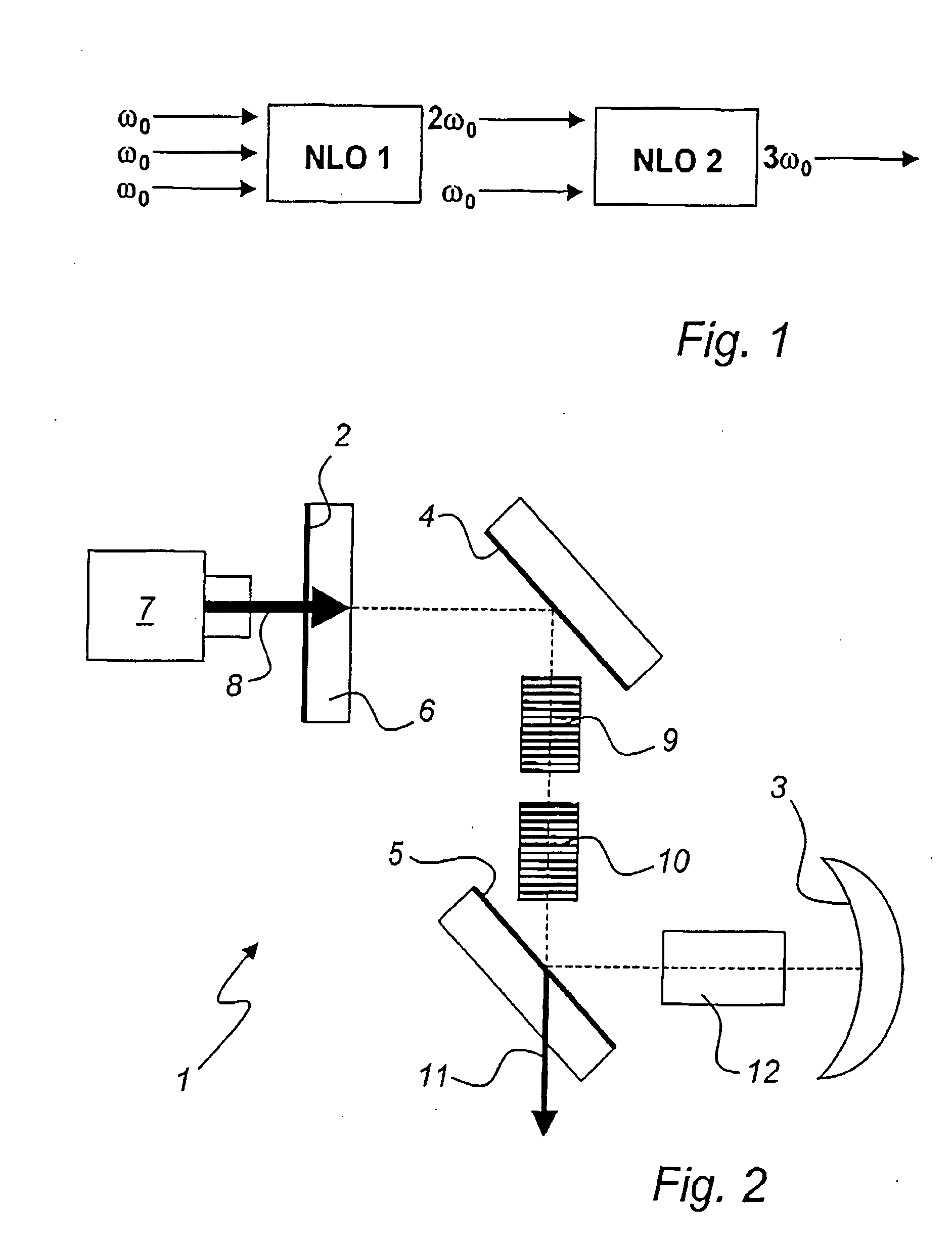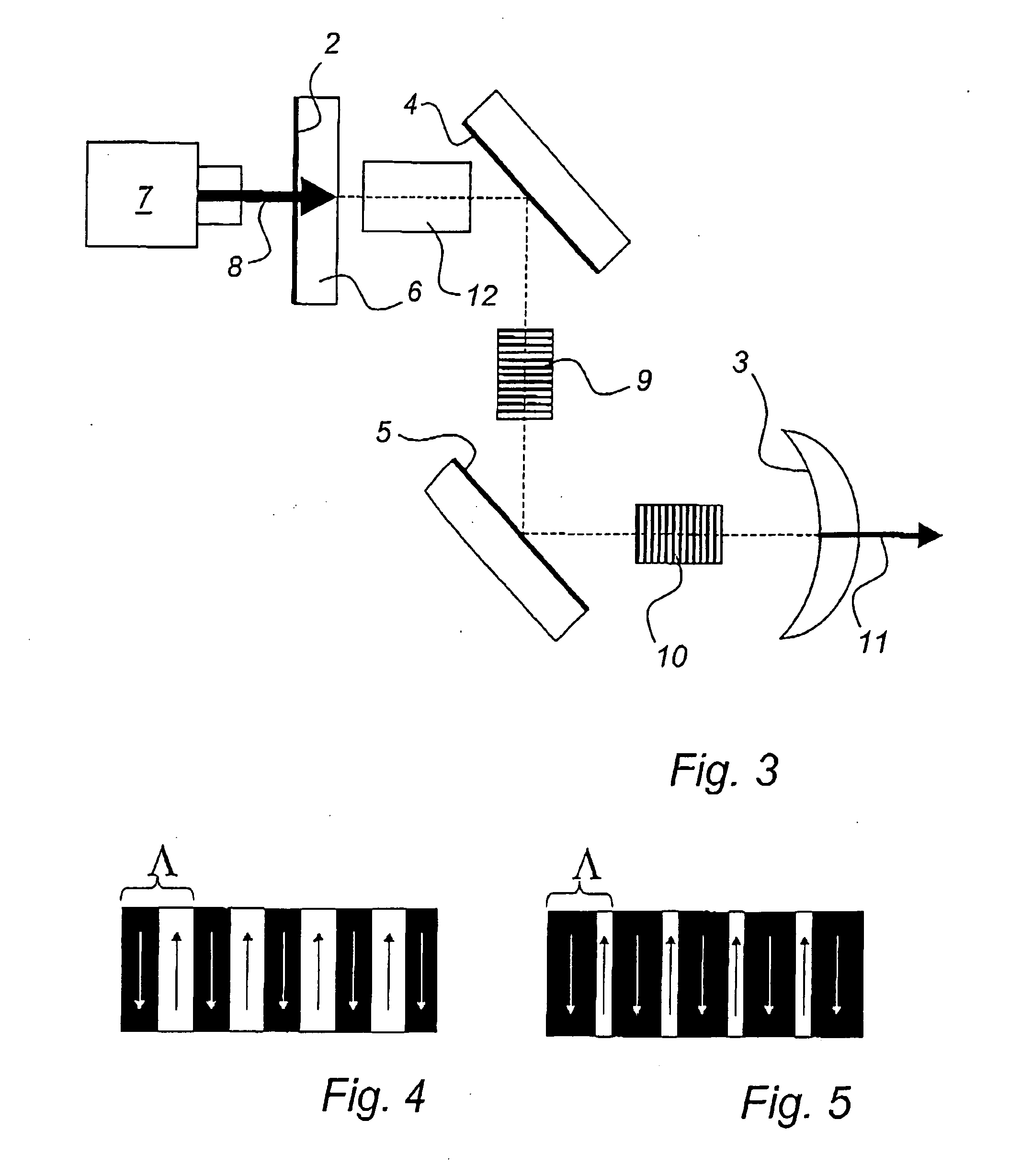Continuous-wave ultraviolet laser
a laser and continuous wave technology, applied in the field of shortwavelength diodepumped solid state lasers, to achieve the effects of improving performance, increasing laser stability, and efficient frequency conversion
- Summary
- Abstract
- Description
- Claims
- Application Information
AI Technical Summary
Benefits of technology
Problems solved by technology
Method used
Image
Examples
Embodiment Construction
[0035]Before going into a detailed description of the preferred embodiments shown on the drawings, one laser according to the present invention will be explained in general terms.
[0036]A laser according to the present invention may be designed for emission at 355 nm (i.e. ultraviolet laser light). A diode laser for pumping at 808 nm is used to provide energy to the active body (gain medium of the laser), which is comprised of Nd:YVO4. Laser emission at 1064 nm is obtained by using a resonant optical cavity in a folded configuration enclosing the Nd:YVO4 crystal. Two non-linear optical elements are placed inside the resonant cavity. The first non-linear element is designed for optimum frequency conversion of the 1064 nm radiation to 532 nm (i.e. frequency doubling), and the second non-linear element is designed for optimum frequency conversion (sum frequency mixing) of the 1064 nm radiation and the 532 nm radiation to 355 nm. Good beam quality is ensured by using a curved end mirror ...
PUM
 Login to View More
Login to View More Abstract
Description
Claims
Application Information
 Login to View More
Login to View More - R&D
- Intellectual Property
- Life Sciences
- Materials
- Tech Scout
- Unparalleled Data Quality
- Higher Quality Content
- 60% Fewer Hallucinations
Browse by: Latest US Patents, China's latest patents, Technical Efficacy Thesaurus, Application Domain, Technology Topic, Popular Technical Reports.
© 2025 PatSnap. All rights reserved.Legal|Privacy policy|Modern Slavery Act Transparency Statement|Sitemap|About US| Contact US: help@patsnap.com



